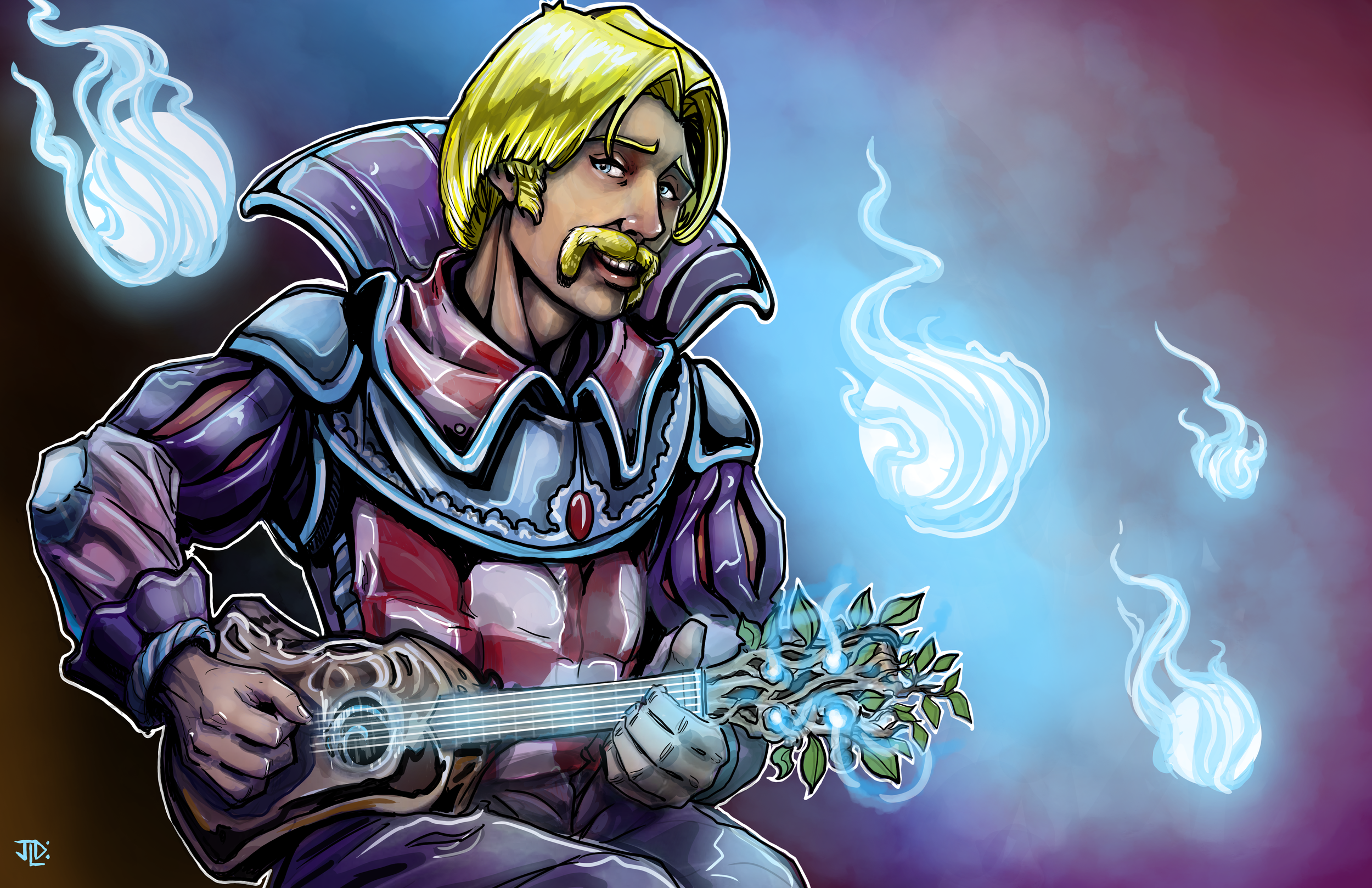Bard College of Creation 5e
Review by Sam West, Twitter: @CrierKobold
Iconic to bards is art, typically music. College of Creation turns this concept instead towards artistry in craftsmanship. Mechanically, this subclass feels like an artificer hybrid, giving you tools to bring objects into the world and a little servant to assist you, culminating in a final feature that feels like Fabricate, but easier, ultimately ending up fairly underwhelming.
See Also: Best Feats for Creation Bard
3rd Level: Note of Potential and Performance of Creation
Note of Potential does half of the heavy lifting in this subclasses power. The magical motes that float around your allies look sweet, and power up every single instance of bardic inspiration you throughout regardless of what it's used for. Every ability check rolls the inspiration die with “advantage”, majorly reducing instances of impactful low rolls (especially as the dice grow to d10s and above). Attack rolls get empowered damage in an area against the hit creatures and nearby enemies of your choice, highly encouraging your allies to spend them on their attack rolls, even if they know they’re going to hit anyway. Finally, saving throws now come with free temporary hit points in fairly large amounts; a d8 or d10 + 4 or 5 can block an entire hit from another creature in the mid-tiers, and in the upper tiers is gravy on top of helping prevent a debilitating save or die kind of effect from debilitating the cleric or fighter.
Performance of Creation is interesting, but challenging to get mileage out of. Mundane objects just don’t tend to be that useful in a game chalked full of magical spells and supernatural abilities. The gold gate and size barrier limit this further; eventually you can get some spontaneous interesting options to appear, which is neat. It rewards creative thinking, and will absolutely be something you’ll want to commit to organizing ahead of time. Knowing what objects are within the scope with their costs and sizes can empower you to grab the right tool for a job at the right moment. Most of the time, though, this is going to feel forgotten about, or a cheap way to arm your disarmed barbarian.
6th Level: Animating Performance
Animating Performance makes up the bulk of the remainder of this subclasses power budget, offering you an animated assistant you control with your bonus action, or when you use your bonus action to give out Bardic Inspiration.
They come with a great AC and solid hit point pool that scales with your total level, have a hover fly speed, can be large or smaller, speed up nearby allies while slowing enemies, and get a reasonable slam attack they can make round after round. All of these independent elements contribute towards the dancing item being a flexible ally with tons of potential in world exploration, combat, and social navigation. Need to unlock a door? Animate a clip or hairband and have it sneak under the door! Want a ridable flying mount? An animated table or large sofa easily offers you that.
Plus, if it ever is destroyed, a 3rd level slot to summon it back is a great price, as this feature is incredibly similar to the summon spells introduced in Tasha’s Cauldron of Everything. Not ever getting an extra attack is a bit of a bummer, but it is a powerful addition to your sheet throughout most of the game.
14th Level: Creative Crescendo
Creative Crescendo empowers your Performance of Creation mainly by removing the gold barrier put there prior. Now, you can conjure huge objects of any cost into existence in multitudes. Conceptually, again, this is neat, but they will always be limited by mundanity. As a full-caster, you’ve got tools that can alter the laws of reality, and seeing as Huge only covers 20-foot areas, making longships and other big vehicles is out of the question leaving you with a tool to summon some wagons or arm the party. It sounds cool, and again, can reward some clever thinking and brainstorming, but isn’t the kind of feature you’ll find powerful uses for session-to-session typically.
All Together
Even with Creative Crescendo and Performance of Creation being somewhat lackluster features, Note of Potential and Animating Potential are solid upgrades for a spell-focused bard. This isn’t going to be a default option over College of Lore or anything, and because it asks for a bit of bookkeeping to track what objects you can and can’t create, isn’t something I’d recommend to new bards. It is left as a fine option for players who want the animator fantasy and don’t mind getting a lackluster 14th-level feature if you commit to twenty levels in bard. Artificer multiclassing seems like a slam-dunk idea for the subclass.
The main takeaway from this option is mundane items, regardless of size, tend to be fairly low impact compared to magic or class features, and summoning magic this flexible is routinely good, regardless of the context around it. This subclass will feel like base bard plus, and that’s entirely reasonable.
Thank you for visiting!
If you’d like to support this ongoing project, you can do so by buying my books, getting some sweet C&C merch, or joining my Patreon.
The text on this page is Open Game Content, and is licensed for public use under the terms of the Open Game License v1.0a.
‘d20 System’ and the ‘d20 System’ logo are trademarks of Wizards of the Coast, Inc.
and are used according to the terms of the d20 System License version 6.0.
A copy of this License can be found at www.wizards.com/d20.



